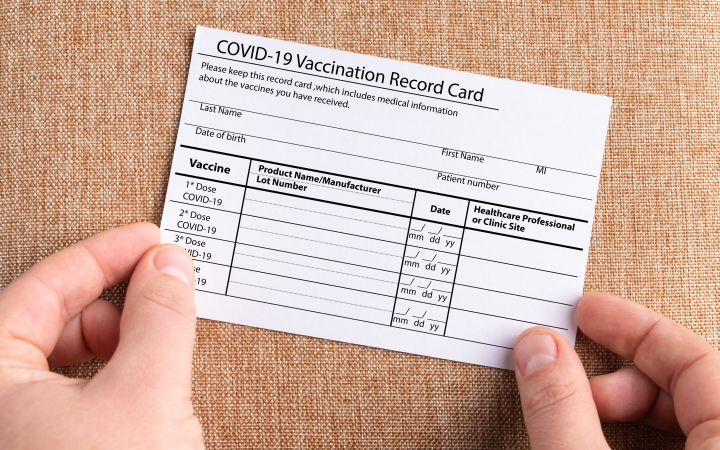
Biden’s Vaccine Mandate and Delta’s Surcharge Signal Sweeping Changes for Employers and Employees
Since we last blogged about the changes in the world of COVID-19 vaccines there have been plenty of headlining developments that are worthy of mention including the August 23, 2021 FDA approval of the Pfizer vaccine, a woman being arrested in Hawaii for attempting to skirt the state’s entry requirements via the use of a fake vaccination card, and various state law mandates for teachers, healthcare workers, etc. This is all coupled with much enthusiasm from employers hoping to follow in the footsteps of Delta Air Lines’ recent decision to add a $200 monthly health insurance charge for their unvaccinated staff members. This heightened enthusiasm has led many employers to explore the various ramifications (both legal and company culture wise) of implementing a vaccine mandate for their non-vaccinated employees and, taking it a step further, some have also considered their own spin on Delta’s surcharge requirement. In fact, as per Reuters, “More than half of U.S. companies are planning to impose COVID-19 vaccine mandates in the workplace by year end, with almost a quarter considering vaccination as a condition of employment, according to a national survey of nearly 1,000 employers.”
As we have discussed in previous entries in this series of blogs, the three primary options available to employers are either vaccine incentives, vaccine mandates, or penalties for non-vaccinated workers. In the early days of COVID-19 vaccine availability, many employers seeking to curb the effects of the pandemic on their physical workforce chose to implement either a mask mandate for in-office employees or opted to provide an incentive with some sort of reward (monetary or otherwise) for employees who voluntarily took the vaccine. Vaccine incentive programs fall into the category of the “carrot” approach rather than the “stick”. Depending on myriad factors associated with the makeup of a particular company’s workforce, i.e., age, demographics, office size, the amount of virtual vs. non-virtual employees, etc., employers surely experienced mixed results with the carrot approach due to the polarizing nature of the vaccine itself.
With companies increasingly looking for ways to return to a sense of normalcy in the workplace while simultaneously hoping to limit their costs for claims associated with COVID-19 hospitalizations, which have been estimated by some researchers to be around $40,000 per hospital stay, employers have now turned to vaccine mandates and surcharges instead (the stick method).
The federal government has also taken note of the stagnant vaccination rates amongst employees, resulting in the Biden administration enacting a six-pronged strategy to accelerate the process of “vaccinating the unvaccinated” on September 9, 2021. President Biden’s plan includes the development of a rule, in conjunction with the Department of Labor’s Occupational Safety and Health Administration (OSHA), “that will require all employers with 100 or more employees to ensure their workforce is fully vaccinated or require any workers who remain unvaccinated to produce a negative test result on at least a weekly basis before coming to work.” OSHA will soon be issuing an Emergency Temporary Standard (ETS) to put this in effect and will take on the responsibility of ensuring compliance. Hefty fines are expected for non-conformity. Additionally, it will be mandatory for all federal employees as well as any contractors who perform work for the federal government to receive the vaccine. The weekly testing opt-out alternative will not be applicable to these groups. Employers with more than 100 employees will also be required to provide Paid Time Off (PTO) to employees for the time that it takes them to get vaccinated and/or recover from any post-vaccination symptoms they may experience. The complete implications of the plan will not be fully realized until the final rules have been released. We expect this to occur within the next 30 days.
We will continue to monitor the situation for any updates and provide further guidance as applicable. For additional support you may contact your AssuredPartners Account Manager or Sales Executive. Employers may wish to consult with Labor/Employment counsel to ensure that their labor practices are consistent with the ADA, GINA, and EEOC guidance.
Additional Links:
- August 19, 2021 – Vaccine Mandates and the Workplace: Where We Stand Currently
- June 29, 2021 – EEOC Provides Updated Guidance on COVID-19 Vaccine Incentives
- March 18, 2021 – Employer Provided COVID Vaccines Part II
- February 24, 2021 – EEOC Provides Guidance on Workplace COVID-19 Vaccination Requirements
- January 8, 2021 – Update on COVID – Progression and Vaccines
- December 12, 2020 – COVID Vaccinations are Coming, What Does it Mean for my Self-Funded Health Plan
Featured News & Insights

In 2025, the conversation around pharmacy benefit managers (PBMs) entered a new era. For years, debate centered on “spread pricing”, the difference between what PBMs bill health plans and what they...

For many HR teams and brokers, open enrollment can feel like the finish line. Months of planning, communication, and technology setup finally come together in a few fast-moving weeks. When the last...

AssuredPartners has long been committed to providing you and your teams with highly valuable content packed with deep industry expertise and innovative risk management solutions. As a valued member...